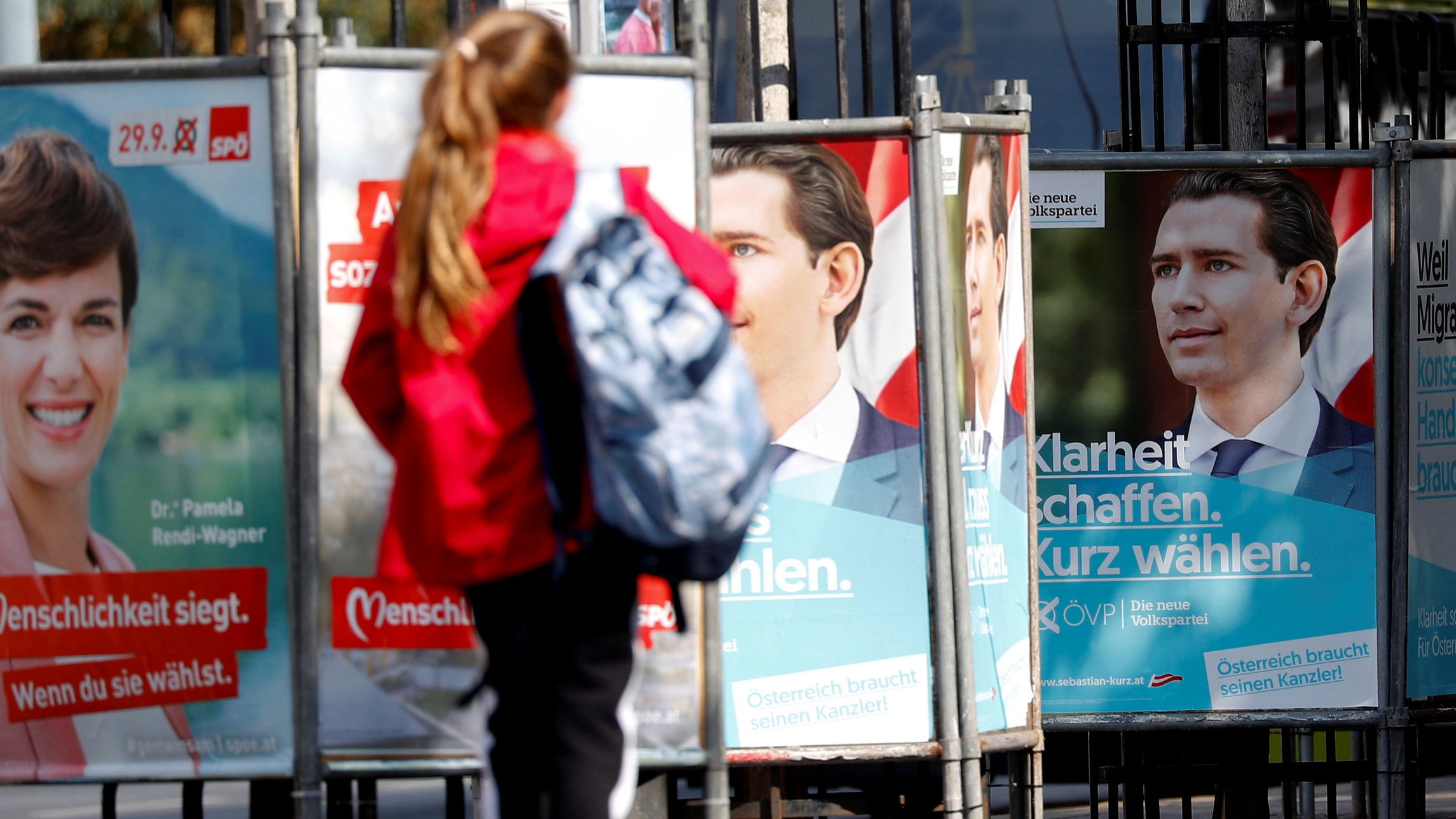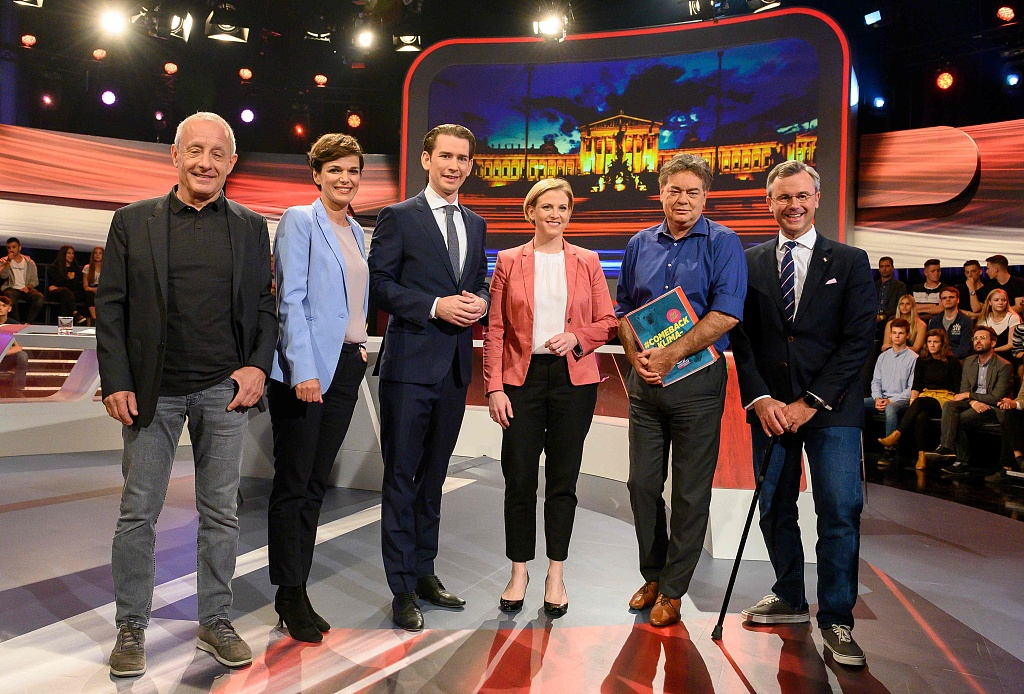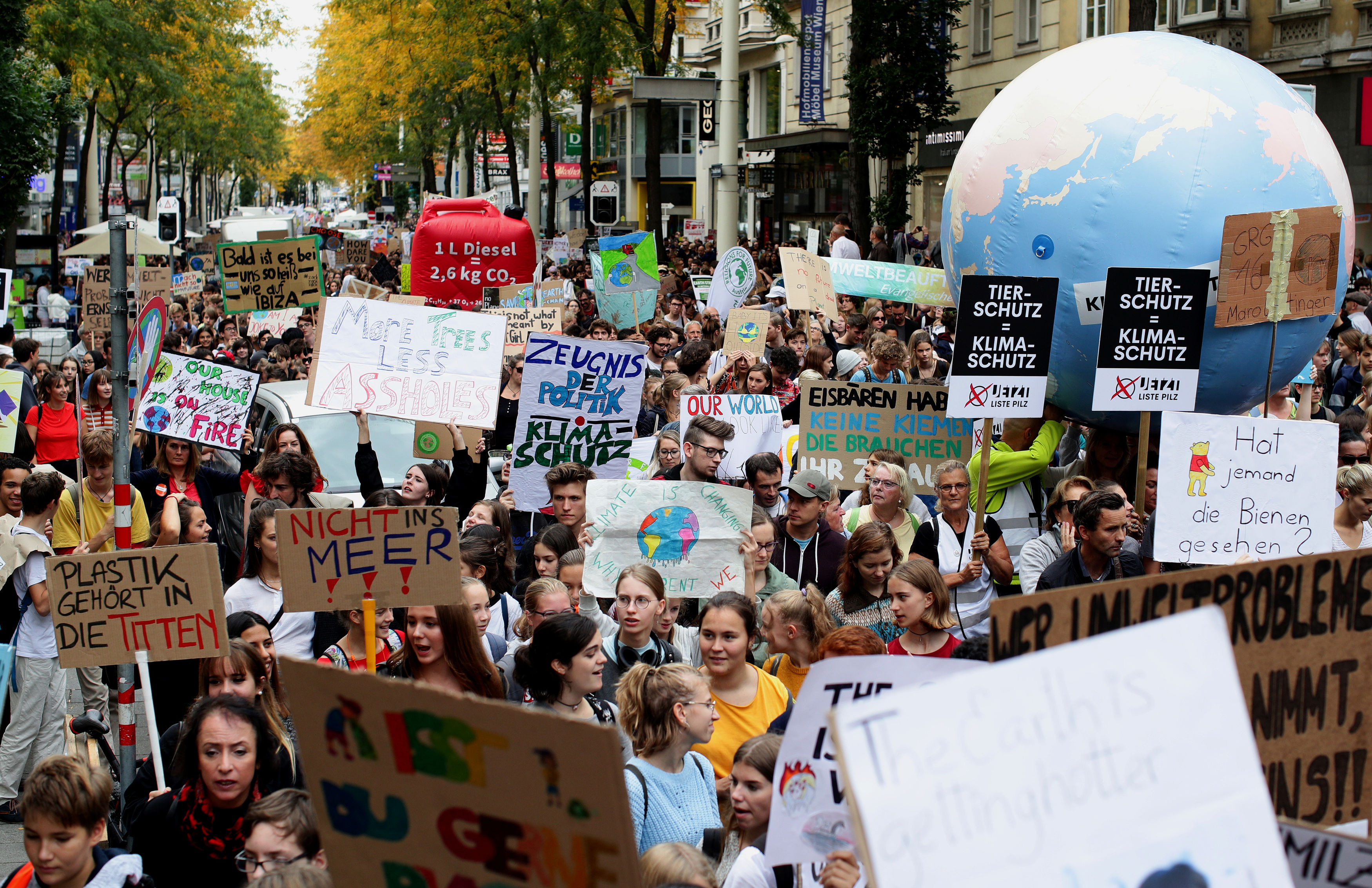02:31

Four months after Austria's conservative-far-right coalition went down in flames over a secret video scandal, voters will head to the polls on Sunday to elect a new government, but with little major change on the horizon.
Here's a quick overview of what to expect.
An early election was called in May after the far-right Freedom Party (FPOe) pulled out of the ruling coalition following video revelations its leader Heinz-Christian Strache had offered state contracts to a supposed Russian agent in exchange for help winning elections.
The remaining government, led by Chancellor and conservative People's Party (OeVP) leader Sebastian Kurz, then succumbed to a no-confidence vote – a historic first for Austria – after barely 17 months in office.
Read more: 'Enough is enough' - Five days of Austria's government collapse
Since then, a government of experts led by Austria's first ever female chancellor, Brigitte Bierlein, has been conducting day-to-day business.
Sunday's election will be the country's second in less than two years.
Despite being booted out of government just months ago amid mass protests, the People's Party is again leading in the polls.
Helped by its youthful leader Kurz, the OeVP is far ahead of its competitors with an expected 33-34 percent of votes, higher even than the result it achieved in October 2017.

From L to R: Peter Pilz of the JETZT Party, Social Democrats leader Pamela Rendi-Wagner, People's Party head Sebastian Kurz, NEOS leader Beate Meinl-Reisinger, Werner Kogler of the Green party and Norbert Hofer of the Freedom Party pose for a photo prior to a televised debate in Vienna, Austria, September 26, 2019. /VCG Photo
From L to R: Peter Pilz of the JETZT Party, Social Democrats leader Pamela Rendi-Wagner, People's Party head Sebastian Kurz, NEOS leader Beate Meinl-Reisinger, Werner Kogler of the Green party and Norbert Hofer of the Freedom Party pose for a photo prior to a televised debate in Vienna, Austria, September 26, 2019. /VCG Photo
The Social Democrats (SPOe), the OeVP's historic rivals, are hovering at around 22 percent.
The Freedom Party, meanwhile, took a serious hit with the Ibiza video scandal and its former star Strache is now also being investigated for embezzling party funds. Still, under its more palatable new leader Norbert Hofer, it could win about 20 percent of votes, according to the latest surveys.
Experts predict a close race for second place between the far-right and Social Democrats.
But one of the biggest stories is the massive surge in support for the environmental Greens. After failing to make the four-percent threshold to enter parliament in 2017, they are now polling at around 12-13 percent amid a global mobilization for climate action.
They are followed by the liberal NEOS at around eight or nine percent.
In the last election, border security and immigration topped the agenda, benefiting the far-right and pushing Kurz's conservatives to the right as Europe struggled with its migrant crisis. But this time around, parties have been scrambling to position themselves with regards to the growing climate crisis.
A small landlocked country in the heart of Europe with a population of 8.9 million and an important agricultural sector, Austria has long been environmentally conscious.
Over 22 percent of its farmland is used for bio or organic farming and a third of the energy used comes from wind, hydropower, and other renewable energy sources.

Young protesters march for climate action during a Fridays for Future rally in Vienna, Austria, September 27, 2019. /Reuters Photo
Young protesters march for climate action during a Fridays for Future rally in Vienna, Austria, September 27, 2019. /Reuters Photo
But despite a well-developed and popular public transportation and rail network, it is still exceeding its CO2 emissions targets, prompting local environmental groups to call for further action.
Not only the Greens, but all major parties including the FPOe have been putting forward plans to reduce CO2 emissions, switch to renewable energy by 2030, and support local and sustainable food production.
Although the 33-year-old Kurz looks set to become chancellor for a second time – he was the world's youngest head of state when he took office in 2017 – Sunday's election is likely to be followed by weeks of negotiations before a new government is sworn in.
Since no party tends to get a majority of seats, whoever wins usually needs to form a coalition with at least one other partner.
SPOe, Greens and NEOS have warned against a repeat of the OeVP-FPOe alliance but Kurz has refused to rule it out.
Another option would be the age-old "grand coalition" between OeVP and SPOe: the two parties have ruled the country, either together or with another partner, since World War II.
SPOe leader Pamela Rendi-Wagner has said she is open to any coalition except with the FPOe, so a grand coalition is not impossible. But relations with the OeVP have been frosty, especially since Rendi-Wagner initiated the no-confidence vote against Kurz's government in May.

A person passes an election campaign poster for the Green Party in Vienna, Austria, September 23, 2019. /Reuters Photo
A person passes an election campaign poster for the Green Party in Vienna, Austria, September 23, 2019. /Reuters Photo
A far more exciting alternative, for observers and many voters, would be the so-called "turquoise-green-pink" coalition – named after the OeVP, Greens and NEOS' party colors. All three party leaders have left this option on the table.
Based on the latest polls and parties' preferences, no other coalition could secure a parliamentary majority.
Four months ago, expectations were high that the Ibiza scandal, protests in the street and the government's collapse would bring about a radical change in Austrian politics. But Sunday's result will very likely point to business as usual, observers predict.
"It will again be a classic coalition government of parties. So the change won't be big at all," political expert Peter Filzmaier told the economic magazine Trend.
First exit polls are expected shortly after polling stations close at 5:00 p.m. CET (11:00 p.m. BJT).
(Cover: A young woman walks past election campaign posters for the Social Democrats and the People's Party in Vienna, Austria, September 23, 2019. /Reuters Photo)